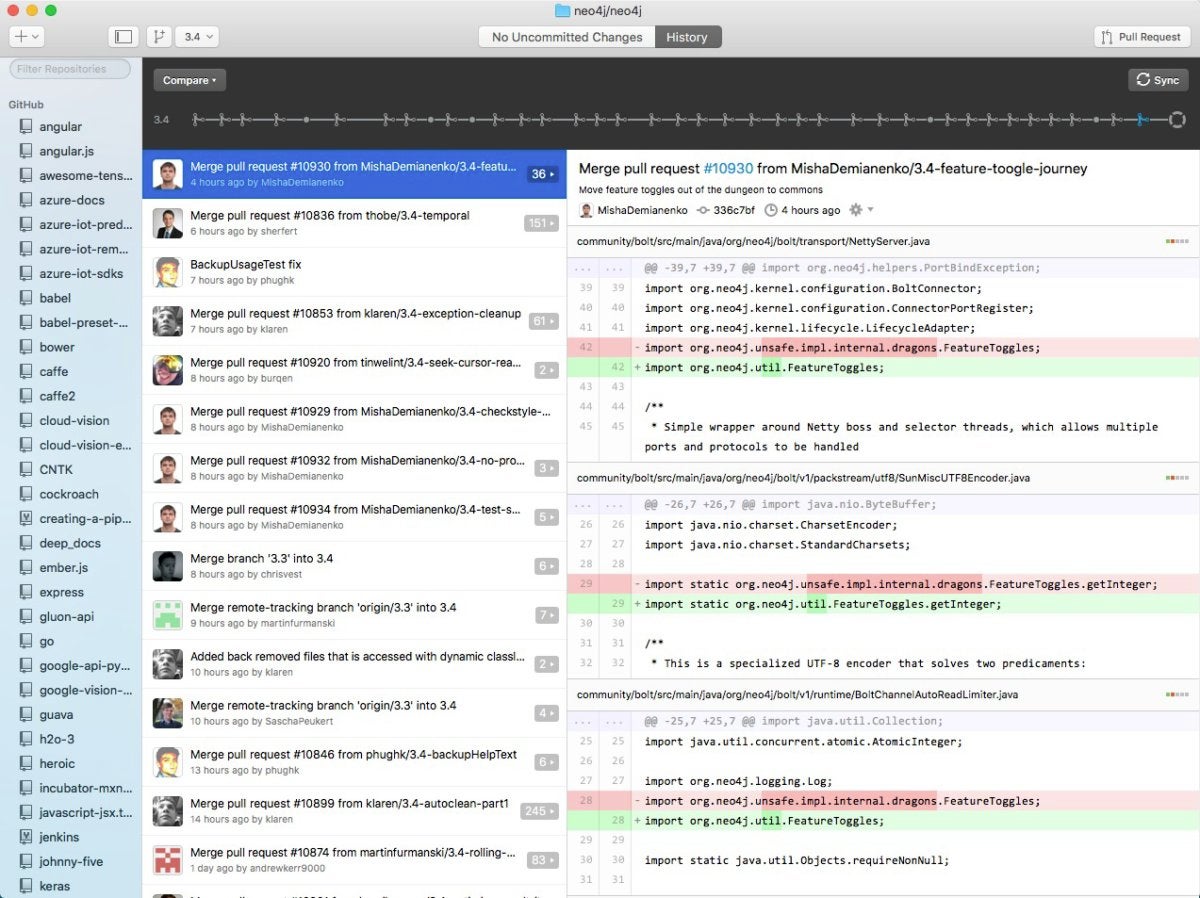

Pulling out more highlights from the recent changes and additions, Microsoft says:Īnother addition to GitHub Desktop 3.0 is support for high-signal notifications. Microsoft says that GitHub Desktop 3.0 also includes "improved support for git operations, like squashing, reordering, or amending commits, as well as exciting new features that bring GitHub closer to your local development workflow". The arrival of real time notifications is a major improvement to the software, but it is far from being the only change.

#Github desktop pull request update#

Microsoft releases KB5011831 update to fix loads of Windows 10 bugs.
#Github desktop pull request free#
Microsoft is preparing to add Microsoft Edge Secure Network, a free VPN, to its web browser.On the Write tab, in the Leave a comment text box, provide a description of the proposed change, and then click Create pull request. In your browser, navigate to the applicable repository on GitHub.Ĭlick Branch:branchname, and then in the Branches list, select the branch for which you want to create a pull request.Ĭlick New pull request, and then on the Open a pull request page, in the Title text box, update the name of the pull request, if necessary.

In the Add an optional extended description… text box, enter a more detailed description of the change, if necessary, and then click Commit changes. Under Commit changes, in the Update filename text box, enter a short description of the changes. Make your changes in the Edit file tab of the webpage, and then click Preview changes to view your proposed changes, without committing them. In your browser, navigate to the applicable repository on GitHub, and then select the file that you want to edit. In the Description text box, write a more-detailed description of the change, if necessary.Ĭlick Commit to master, and then click Sync to push the local changes to the online repo.Įdit files and commit changes in the online repo: Select the changes that you want to commit, and then in the Summary text box, write a short description of the change. Select the repo that contains your changes, and then click Changes. On the Branches page, in the row for the branch that you want to delete, click Delete this branch icon. Delete a repo branchĬlick n branches, where n is the number of existing branches. If you are working with Markdown or other text files, you can edit them in GitHub, and then check in the changes online. In the blank text box, type the name of the branch that you want to create.Ĭlick Create branch: new branch name when it appears.Īfter you have created a Branch, you can clone the files to your local repo, update them on your computer, and then check in the changes from the GitHub Desktop. Note: If there is only one branch, the Branch drop-down list shows Branch: master, and the only branch that is available is master. In Internet Explorer, navigate to the repo on GitHub.Ĭlick Branch : branchname, and then from the Branches list, select the branch you want to copy. This action notifies any user who is watching the repo that a change has occurred. You can review and comment on changes that other users make, and Microsoft Learning staff then approves and merges these changes into the master branch. This allows Microsoft Learning staff, and other MCTs and GitHub users to review, and comment on, your changes. To modify lab materials, you should branch the repo, make updates in your branch, and then submit a pull request to the main (master) branch. You think that the lab needs improvements or modifications. The UI has changed since the lab was created. You might want to modify your lab materials if: You can modify your own copy of the lab materials, and then submit your changes to Microsoft Learning so that they can incorporate your updates. GitHub makes it easy to collaborate with other Microsoft Learning users on the courses in which you are interested. Suggesting changes and collaborating on a repo


 0 kommentar(er)
0 kommentar(er)
